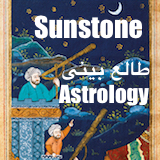The New Yorker:
Survivors of the nuclear blasts in Hiroshima and Nagasaki are still fighting for recognition.
By E. Tammy Kim
Tanaka Terumi was thirteen years old when the United States dropped a nuclear bomb on Nagasaki, in August, 1945. The blast knocked him unconscious. After he came to, he and his mother walked through the city’s “blackened ruins”—buildings zapped to ash “as far as the port,” some three kilometres in the distance. “I found the charred body of one aunt at the remains of her house,” he recalled late last year, from a dais in Oslo. Now ninety-two, he was in town to accept the Nobel Peace Prize on behalf of Nihon Hidankyo, the Japanese association of atom-bomb survivors. “The deaths I witnessed at that time could hardly be described as human deaths,” Tanaka said. He spoke softly, and, with his shiny pate and sunken cheeks, looked frail. The story he recited was chilling, but well practiced.
Survivors of the bombings in Hiroshima and Nagasaki, called hibakusha, formed Nihon Hidankyo in 1956. In the many decades that followed, they demanded medical care and social recognition from the Japanese government. What they asked of all governments proved more elusive: “the immediate abolition of nuclear weapons.”
Japan is the only country to have suffered mass killings from nuclear war. So it was striking when, later in Tanaka’s speech, he referenced the hardships of “A-bomb survivors living abroad,” especially the “Korean hibakusha who were exposed to the atomic bombings in Japan and returned to their home countries.” This was likely news to viewers around the world. Had there been atom-bomb victims who weren’t Japanese? Who were these “Korean hibakusha”?
Go to link










Comments